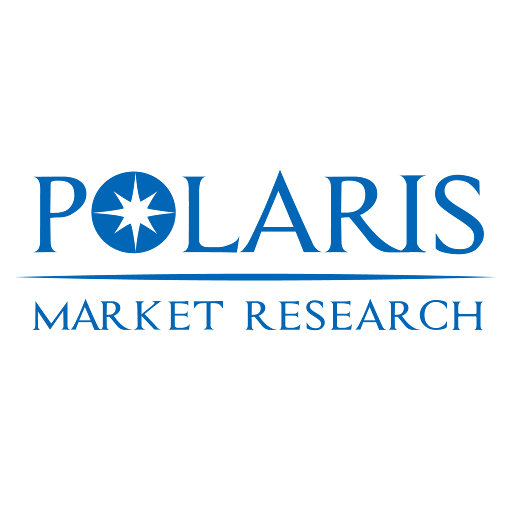Rising Stroke Burden and Technological Advancements Accelerate Growth in the Global Neurovascular Intervention Devices Market

The global neurovascular intervention devices market was valued at USD 2.74 billion in 2020 and is expected to grow at a CAGR of 6.0 % during the forecast period. This performance reflects increasing demand for interventional neurology solutions such as embolization devices, stents, thrombectomy systems and micro-catheters designed for intracranial aneurysms, ischemic stroke and arteriovenous malformations. The growth is underpinned by the ageing global population, rising incidence of neurovascular disorders and expanding adoption of minimally invasive neurosurgical techniques. Regionally, while North America remains the largest market, Asia Pacific is emerging as the fastest-growing region and Europe continues to promote innovation and reimbursement frameworks across a diverse regulatory environment.
In North America, the neurovascular intervention devices market benefits from mature healthcare infrastructure, high procedural volumes and strong reimbursement models. The United States in particular reports hundreds of thousands of stroke and aneurysm interventions annually, supported by an advanced ecosystem of tertiary care centres, interventional radiologists and neurosurgeons. Favorable insurance frameworks and early adoption of next-generation devices give this region a competitive advantage. That said, cost-containment pressures, tight hospital budgets and increasing regulatory scrutiny of device approvals moderate growth and put the onus on device makers to demonstrate superior patient outcomes and cost-effectiveness.
In Europe, the market is characterised by a heterogeneous patchwork of regulation and procurement policies across countries such as Germany, France and the UK. Growth in Europe is driven by an ageing population, high incidence of ischemic stroke and increasing adoption of flow-diverter stents and coil embolization systems. However, differences in reimbursement pathways, longer device-approval cycles and tighter public-health budgets restrain uptake of premium devices and require regional players to tailor pricing and clinical evidence accordingly. In Asia Pacific, rapid expansion of healthcare infrastructure—especially in China, India and Japan—is fostering adoption of neurovascular intervention devices. With one of the highest burdens of stroke occurring in China, and a growing middle class in India investing in advanced treatment options, the region offers substantial opportunity. Rising government health spending, growing awareness of minimally invasive therapy and reduction of import-tariff barriers are positive forces. On the other hand, widely varying levels of training among interventionists, reimbursement gaps and domestic competition from lower-cost suppliers present challenges for global suppliers in this region.
Drivers of the market include the increasing incidence of neurovascular disorders globally, particularly ischemic stroke, cerebral aneurysms and arterial malformations, which create a strong demand for interventional neurology solutions. The advancing age profile of societies worldwide means greater prevalence of comorbidities such as hypertension, diabetes and obesity—all of which raise the risk of neurovascular events. Technological innovations such as micro-catheters, flow-diverter stents, aspiration devices and enhanced imaging compatibility are enabling less invasive procedures with shorter hospital stays and improved outcomes, which in turn encourage adoption. Growth in emerging markets—especially in Asia Pacific and Latin America—is presenting pharmaceutical and device companies with new commercial frontiers and opportunities for localisation of manufacturing, distribution expansion and regulatory harmonisation. Restraints are evident as well: high cost of advanced neurointerventional devices, heavy clinical-trial burdens, and significant capital investment requirements for hospitals remain inhibiting factors. Differences in regulatory regimes and reimbursement policies by region complicate market entry for device suppliers.
Read More @ https://www.polarismarketresearch.com/industry-analysis/neurovascular-intervention-devices-market
In less developed markets, the shortage of skilled neurointerventionalists and limited infrastructure for complex endovascular procedures slow expansion. Opportunities arise from the rise of ambulatory interventional centres, increased penetration of minimally invasive neurosurgery, and growth in device-led management of neurovascular conditions beyond stroke—such as small-vessel aneurysms and AVMs. The trend toward value-based healthcare is pushing device vendors to align cost savings, reduced hospital stays and improved patient outcomes with technology uptake. Minimally invasive access, hybrid neuro-vascular suites and next-generation biomaterials (such as shape-memory polymers) are emerging trends shaping the device market and enabling differentiation.
Regionally, North America’s environment remains supportive of premium device adoption thanks to reimbursement frameworks and high levels of clinical innovation, but cost pressures and consolidation among providers mean vendors must demonstrate clear clinical benefit and economic value. In Europe, the focus is shifting toward real-world evidence generation, procurement alliances across countries, and cross-border regulatory alignment—while local providers press for lower device pricing and standardized treatment pathways. In Asia Pacific, the rapid growth in procedure volumes and infrastructure investment offers substantial runway: China’s stroke burden, Japan’s advanced ageing population and India’s rising surgical capacity create fertile conditions. Yet to capitalise fully in Asia Pacific, device makers must adapt to local markets by addressing training for operators, variable hospital capabilities, pricing competition and local manufacturing or partnership strategies. Meanwhile, Latin America and Middle East & Africa remain smaller in base size but fast-growing thanks to rising private-sector investment, medical tourism and increasing awareness of neurovascular conditions—presenting compelling green-field expansion opportunities for device suppliers.
The competitive landscape remains defined by major global medical-device companies that command significant share of the neurovascular intervention devices market. Major players holding significant market share include:
- Johnson & Johnson
- Medtronic plc
- Stryker Corporation
- Penumbra, Inc.
- MicroVention, Inc.
More Trending Latest Reports By Polaris Market Research:
Clinical Trial Biorepository & Archiving Solutions Market
- AI
- Vitamins
- Health
- Admin/office jobs
- News
- Art
- Causes
- Crafts
- Dance
- Drinks
- Film
- Fitness
- Food
- Jeux
- Gardening
- Health
- Domicile
- Literature
- Music
- Networking
- Autre
- Party
- Religion
- Shopping
- Sports
- Theater
- Wellness


